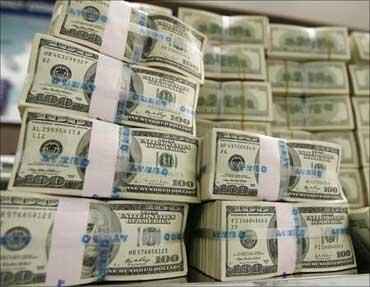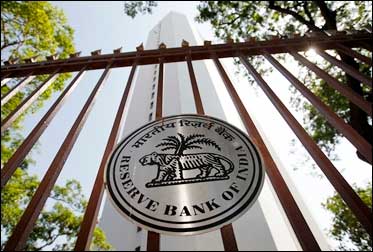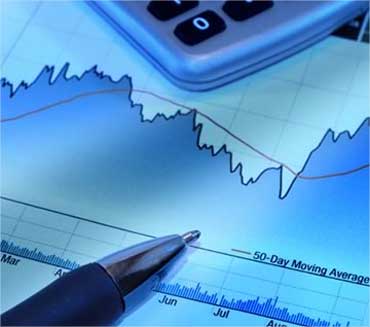 | « Back to article | Print this article |
India to keep booming, but inflation a worry: IMF
The International Monetary Fund expects Indian economy to grow by 8.8 per cent during the current financial year, up from 7.4 per cent a year ago, mainly driven by robust growth in farm sector and pick up in consumption.
The multilateral lending agency, however, expressed concern over rising prices and underlined the need for controlling inflationary expectations by more monetary actions by the Reserve Bank of India.
"Indian economy is projected to grow by 8.8 per cent in 2010-11. . .This year's growth is already benefiting from the rebound in agriculture and pick up in private consumption and employment prospects have improved and disposable income continues to rise," the
IMF said in a report after Article IV consultations with the Indian officials.
Click NEXT to read further. . .
India to keep booming, but inflation a worry: IMF
The economy expanded by 8.9 per cent during the first half of the current fiscal and, according to the government estimates, may revert to the pre-global crisis level of 9 per cent growth.
However, the IMF has projected moderation in growth form the current high levels to 8.1 per cent next fiscal.
Listing rising prices as a major area of concern, the IMF said the RBI could take more monetary steps to contain inflationary expectations.
"We see room for further rate increase (by RBI) but at the same time it has to be done gradually and needs to be looked at continuously," senior resident Representative of the IMF Sanjaya Panth told reporters in Delhi.
The food inflation, according to the data released by the government, rose to the yearly high of 18.32 per cent for the week ended December 25. The overall inflation was 7.48 per cent in November.
Click NEXT to read further. . .
India to keep booming, but inflation a worry: IMF
The inflation, according to IMF, could moderate to 6.5 per cent by March end.
Besides inflation, high capital inflows and uncertainty in the global economy are the other areas of concern that could impair growth.
"Risks to growth are broadly balanced with downside risks relating mainly to the global economy. Surging capital inflows could further spur investment but could complicate macroeconomic management", the report said.
In 2010, the overseas portfolio investment more than doubled to $39 billion from $18 billion a year ago.
According to Panth, "the current inflows are in comfortable zone and there is no need for capital control. However, inflows could increase absorptive capacity in future."
Click NEXT to read further. . .
India to keep booming, but inflation a worry: IMF
Following the global financial meltdown, the growth rate of the India economy slipped to 6.7 per cent in 2008-09 from over 9 per cent in the previous three years.
Driven by stimulus packages provided by the government, the growth rate picked up to 7.4 per cent during 2009-10.
In its annual assessment of the worlds fastest growing economies, IMF, however, said that India should speed up its return to pre-crisis monetary and fiscal policies to keep the economy in check.
In its report, the IMF backed the government's policy of exiting the stimulus measures implemented in the past two years.
The IMF economists, however, preferred tightening of fiscal policy, as they felt that the stimulus exit strategy remained incomplete given the high level of government debt and large capital inflows.
Click NEXT to read further. . .
India to keep booming, but inflation a worry: IMF
The IMF also supported the objective to raise public investment, especially in infrastructure, and to improve social outcomes.
With tax reforms designed to be revenue neutral, IMF economists see the need for subsidy reformsparticularly liberalisation of diesel and fertiliser pricescoupled with more efficient spending.
"A commendable first step in fuel price liberalisation has been taken and promising tax reforms are in the works," the report said.
The IMF said current account deficit is projected to reach 3.3 per cent of gross domestic product in 2010-11 and 3.5 per cent next year.
The deficit has so far been financed mainly by foreign direct investment and equity inflows, but the authorities need to keep an eye on the level of the current account deficit, it said.
"So I think the withdrawal of monetary and fiscal stimulus needs to be accelerated and this needs to be managed in conjunction with stronger currencies. . .We need greater upward flexibility in the currencies of many countries in Asia," he argued.
Click NEXT to read further. . .
India to keep booming, but inflation a worry: IMF
"The second point is how to manage capital inflows that have clearly flooded many parts of Asia. Partly this is due to the growth divergence. We see higher growth in Asia compared to advanced economies," Singh said.
"On one hand, these inflows certainly present many opportunities, but we need to build the economic framework to ensure these capital inflows can create momentum for investment and broader coordination over the medium term," he said.
"However, in the near term, they create challenges for financial stability.
"And, therefore, countries are taking measuresincluding macroprudential measuresto try to deal with them.
I do believe that there is more room to take macroeconomic measures and also I will say that greater exchange rate flexibility offers an important buffer against the risks we see posed by the large capital inflows," Singh said.





